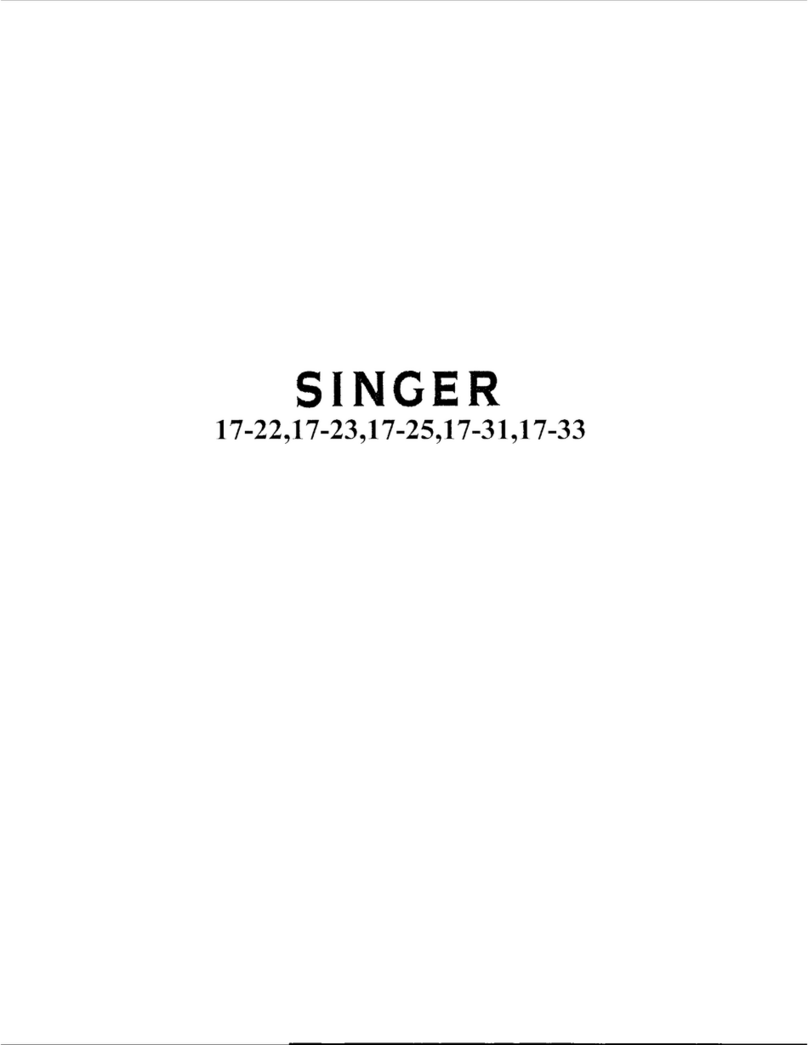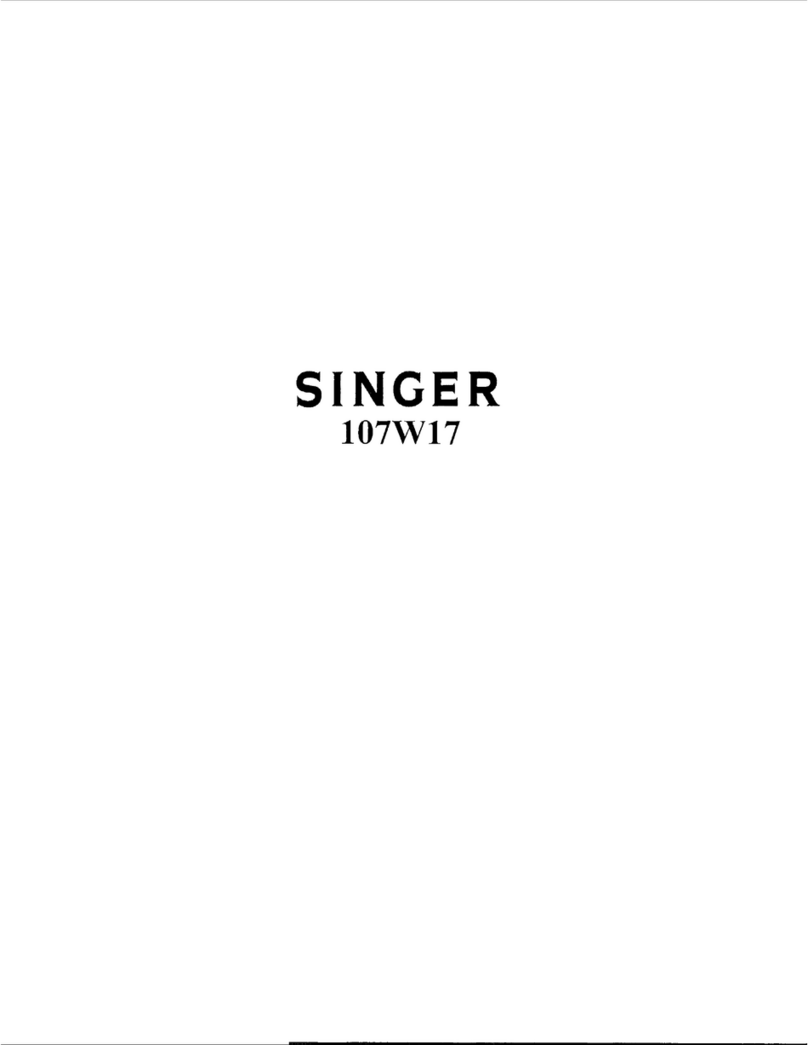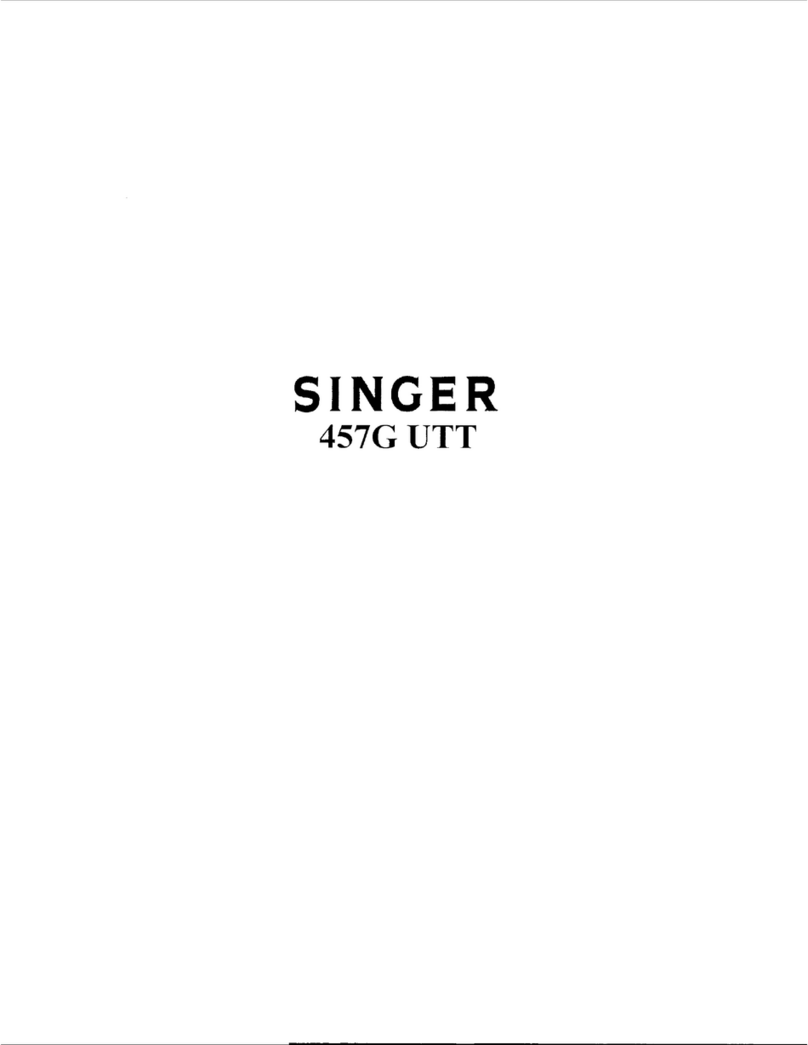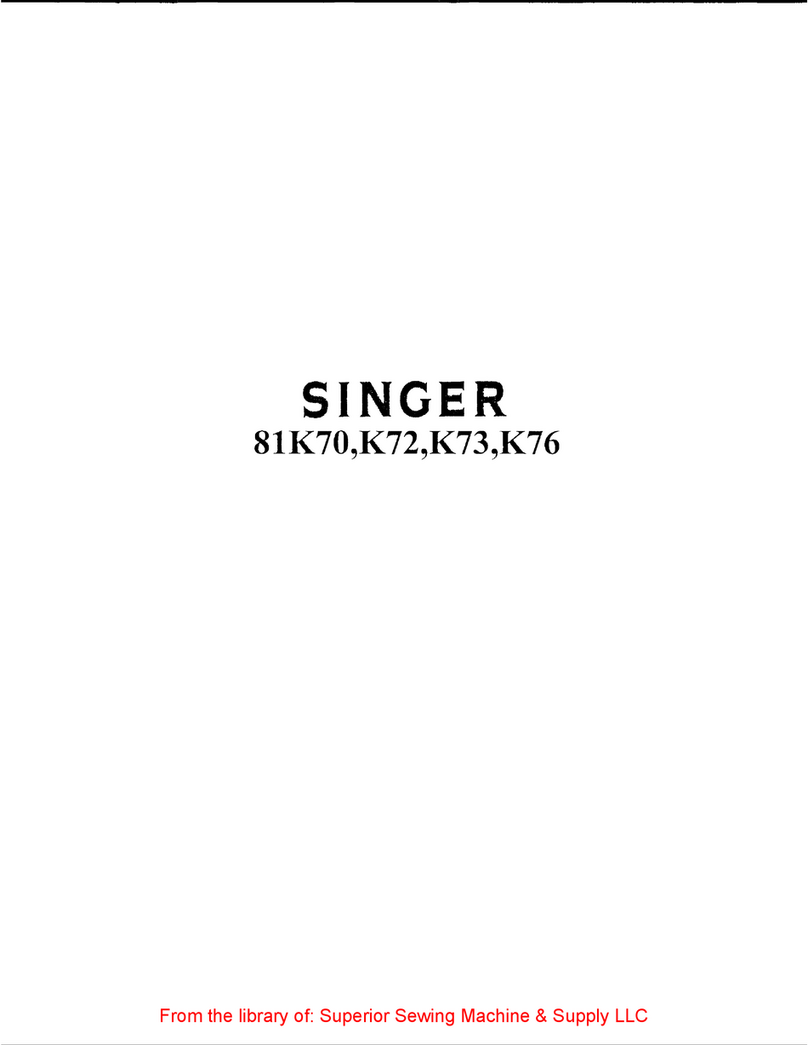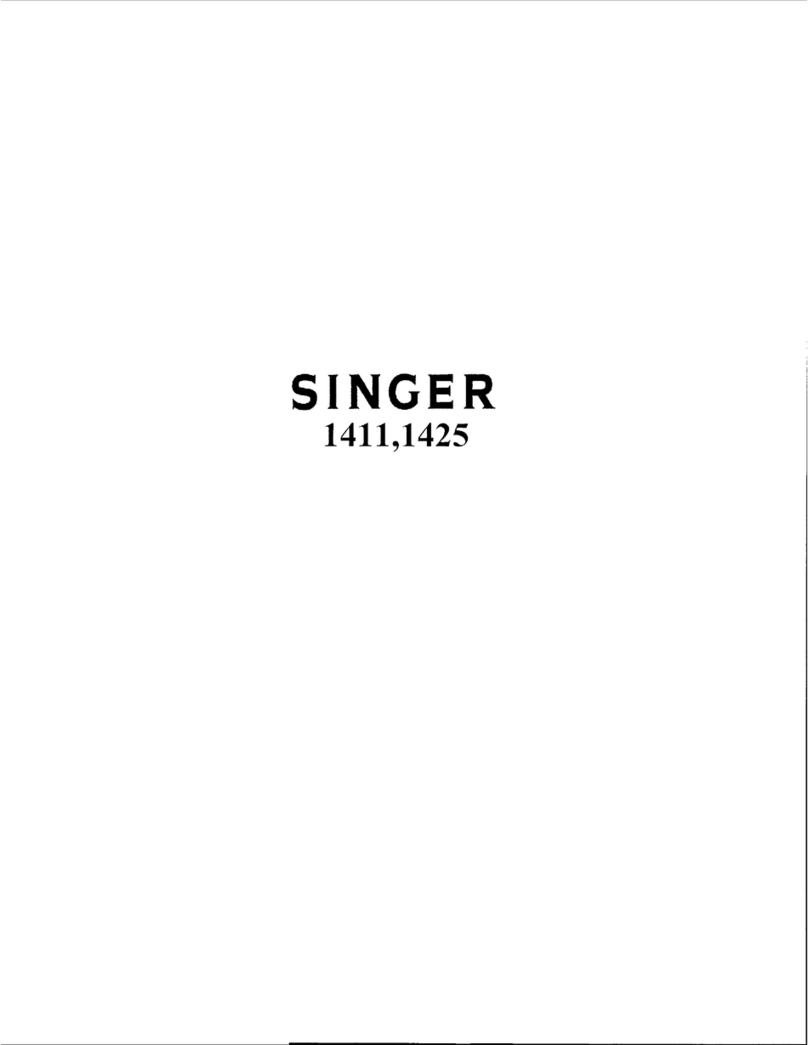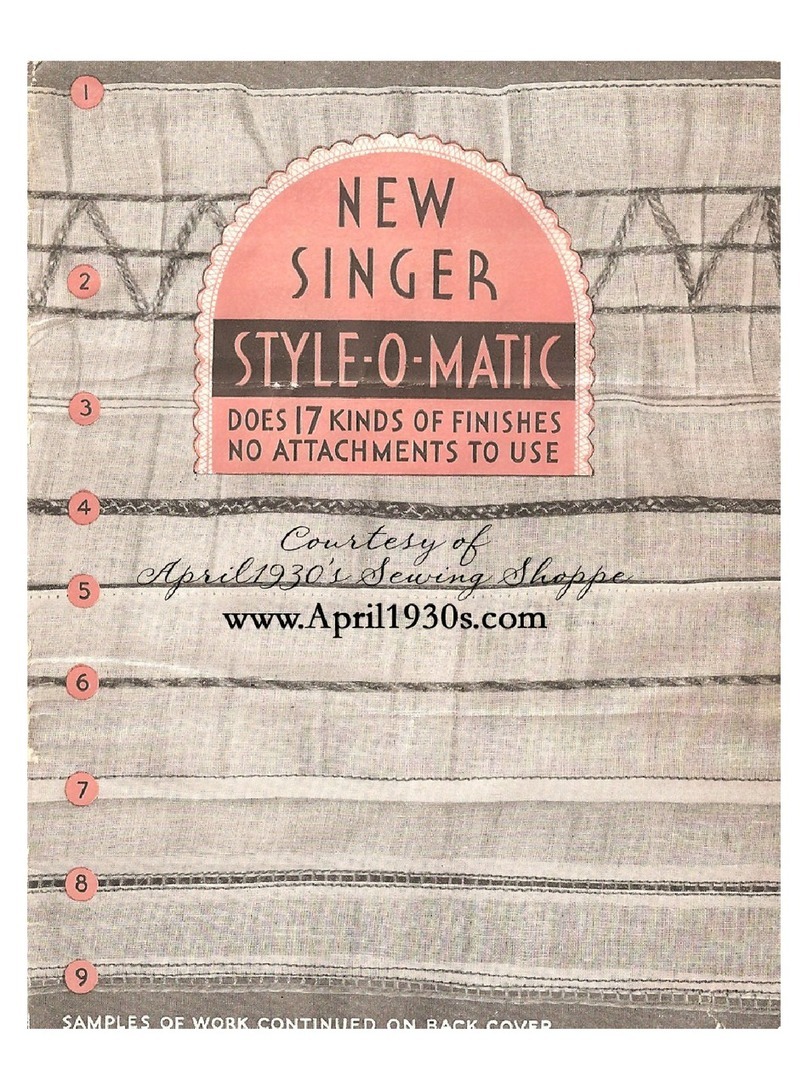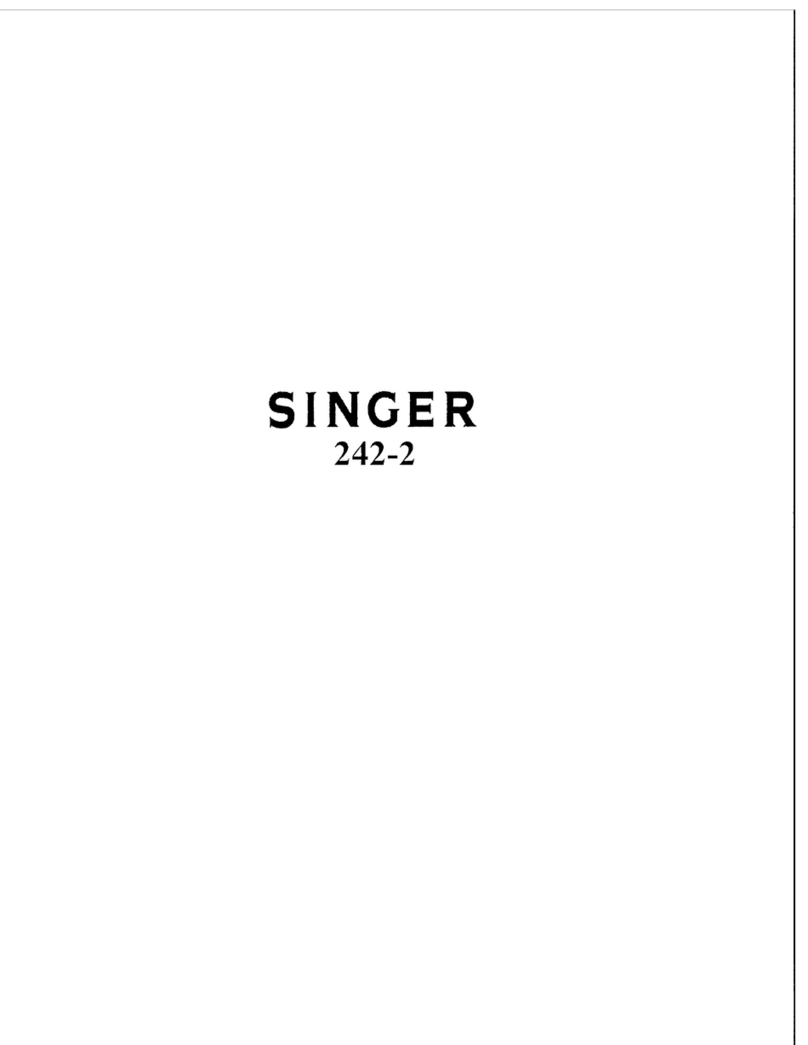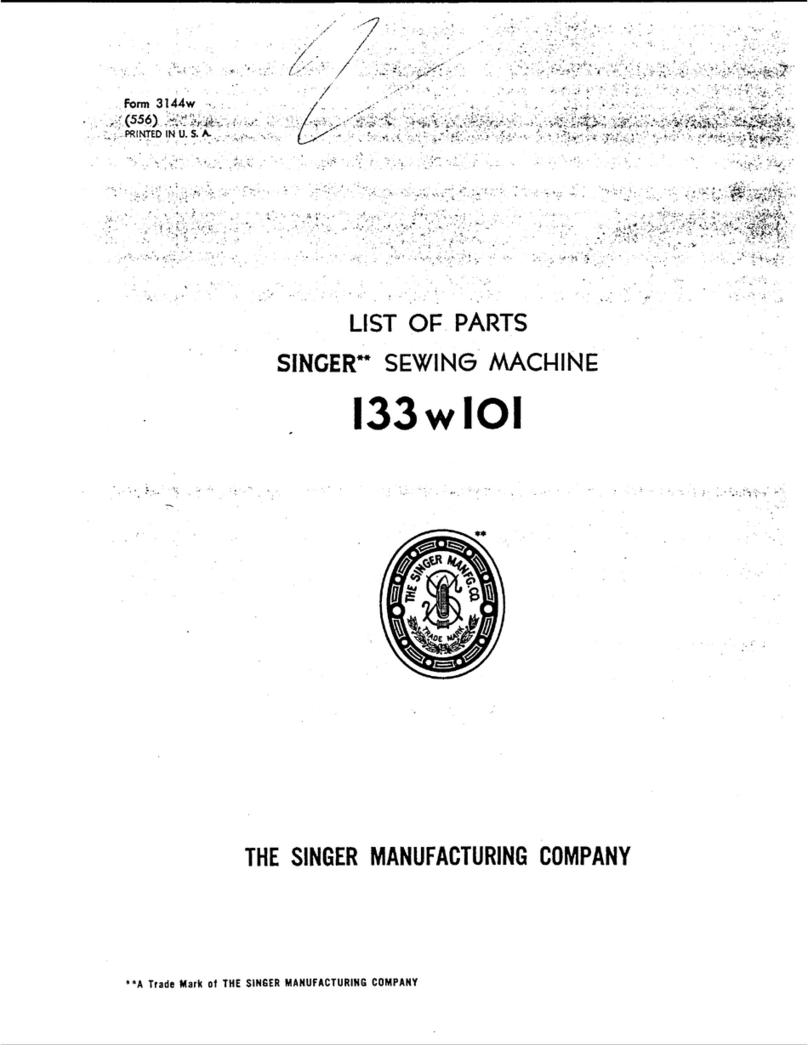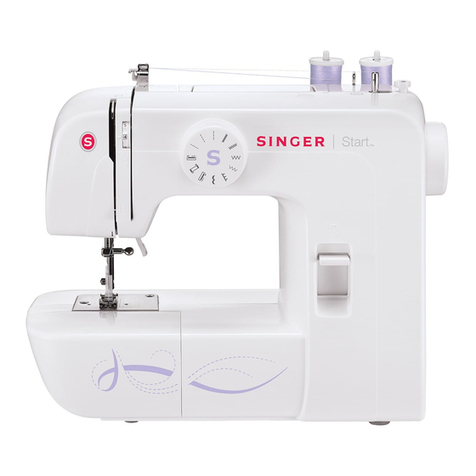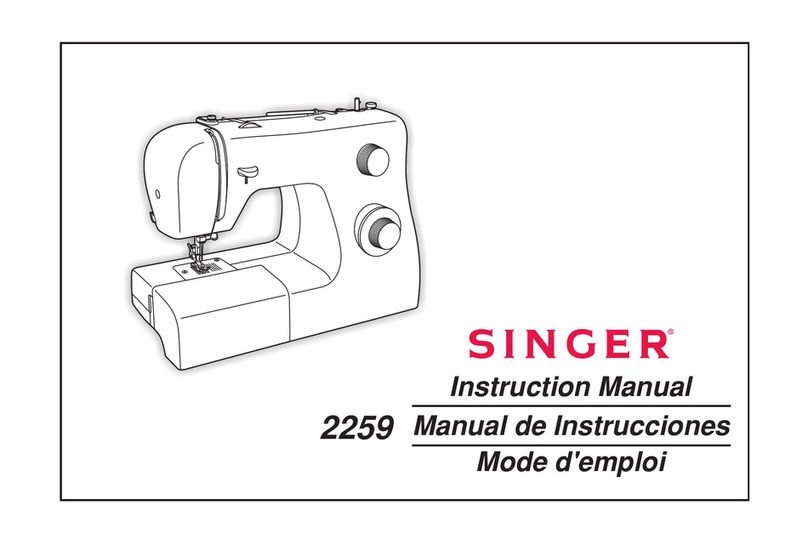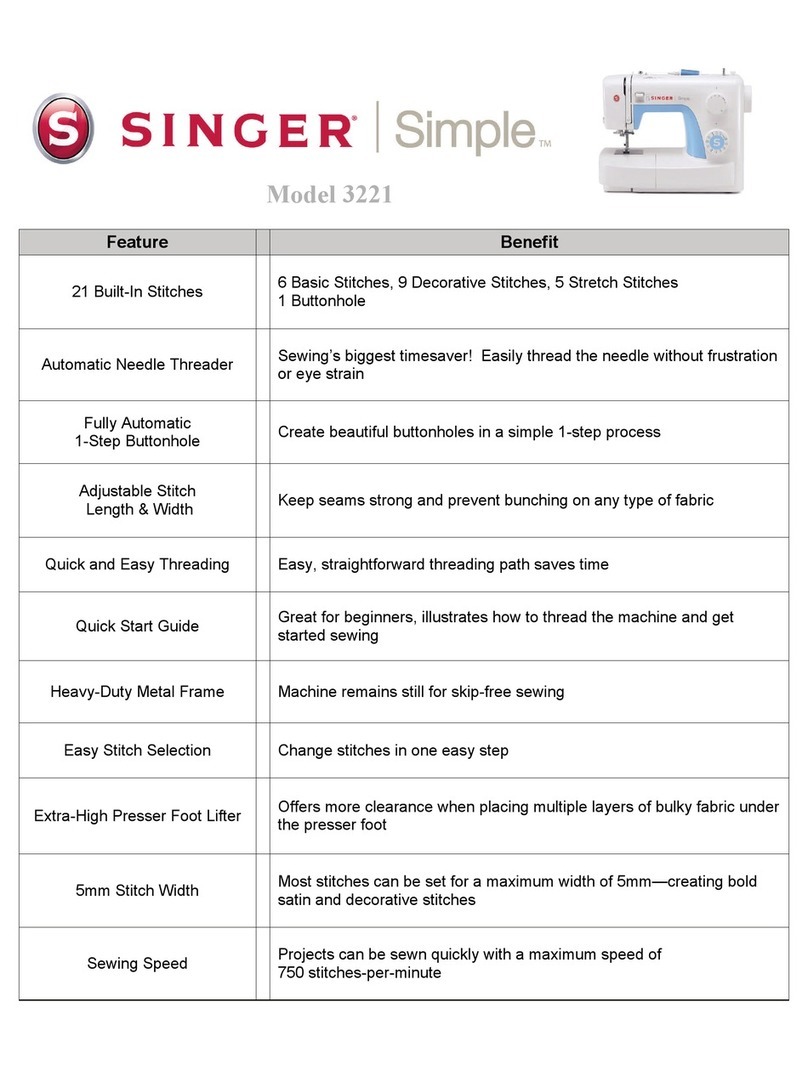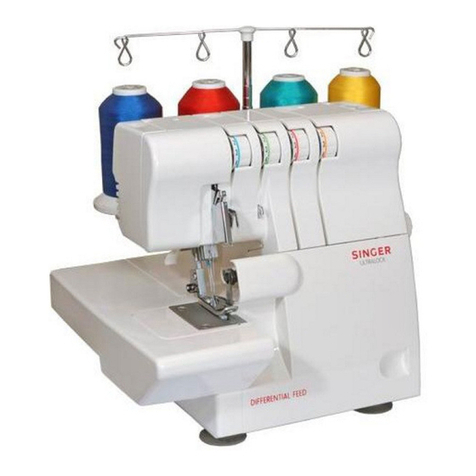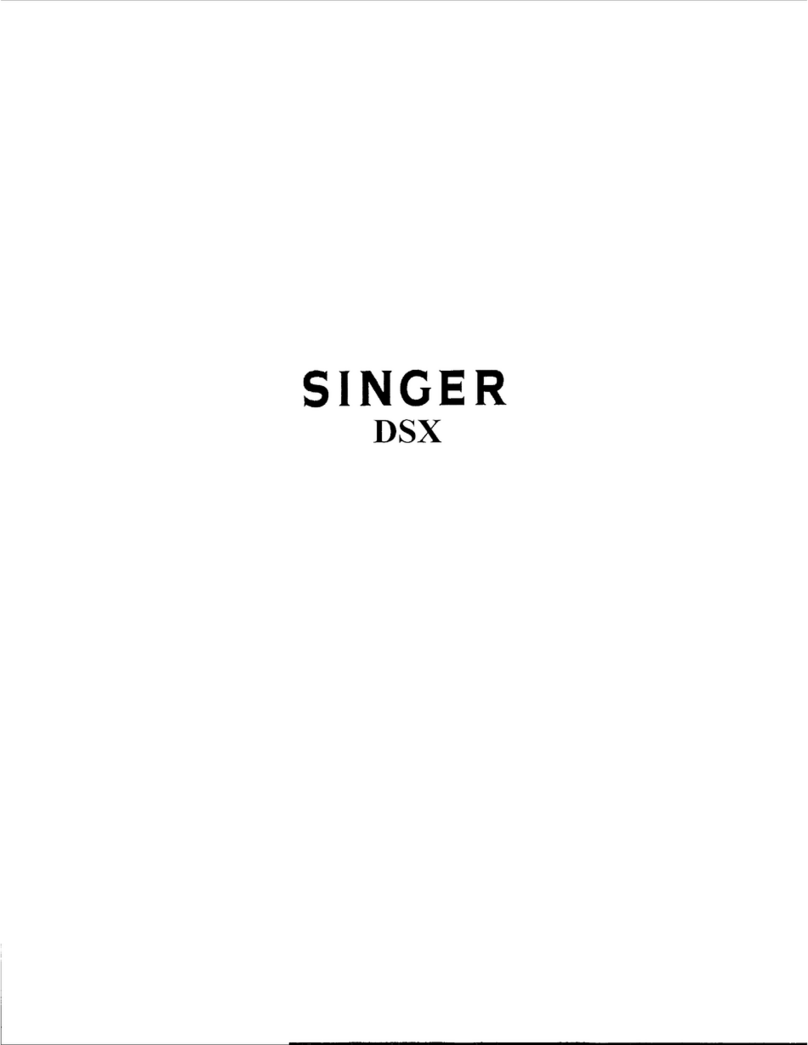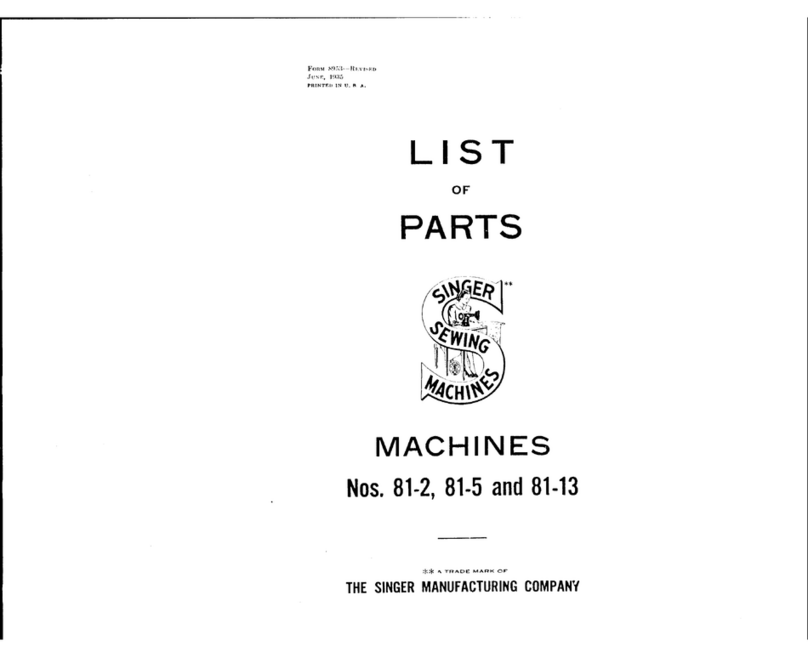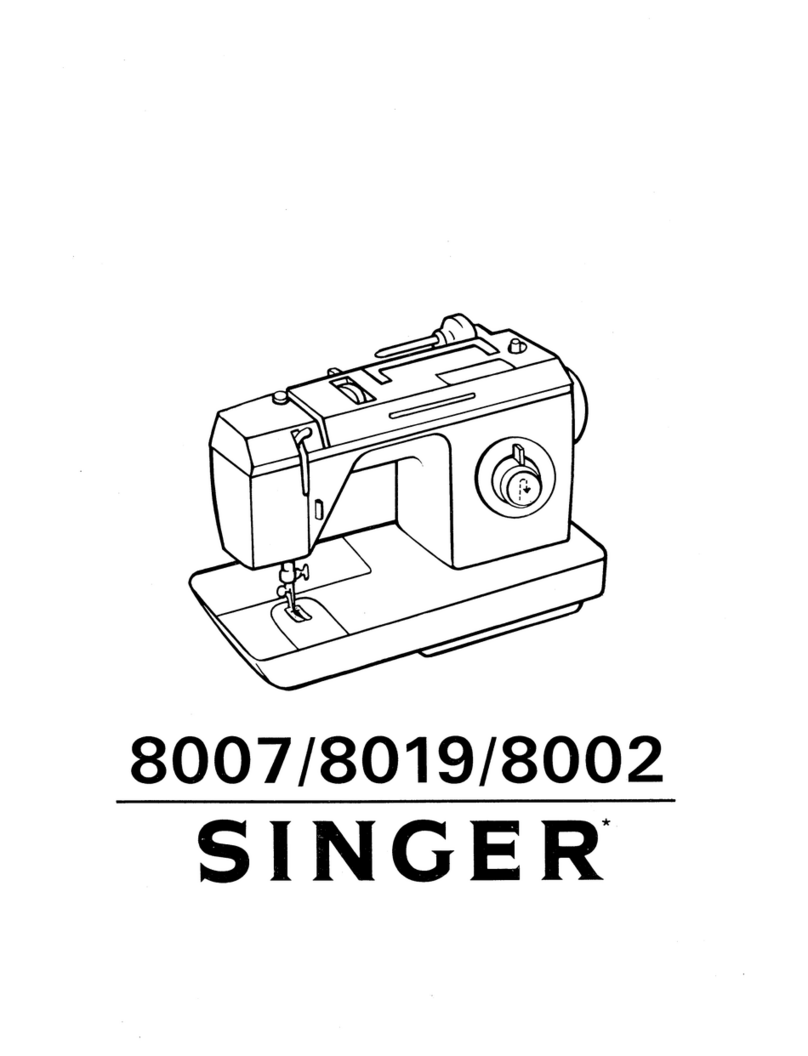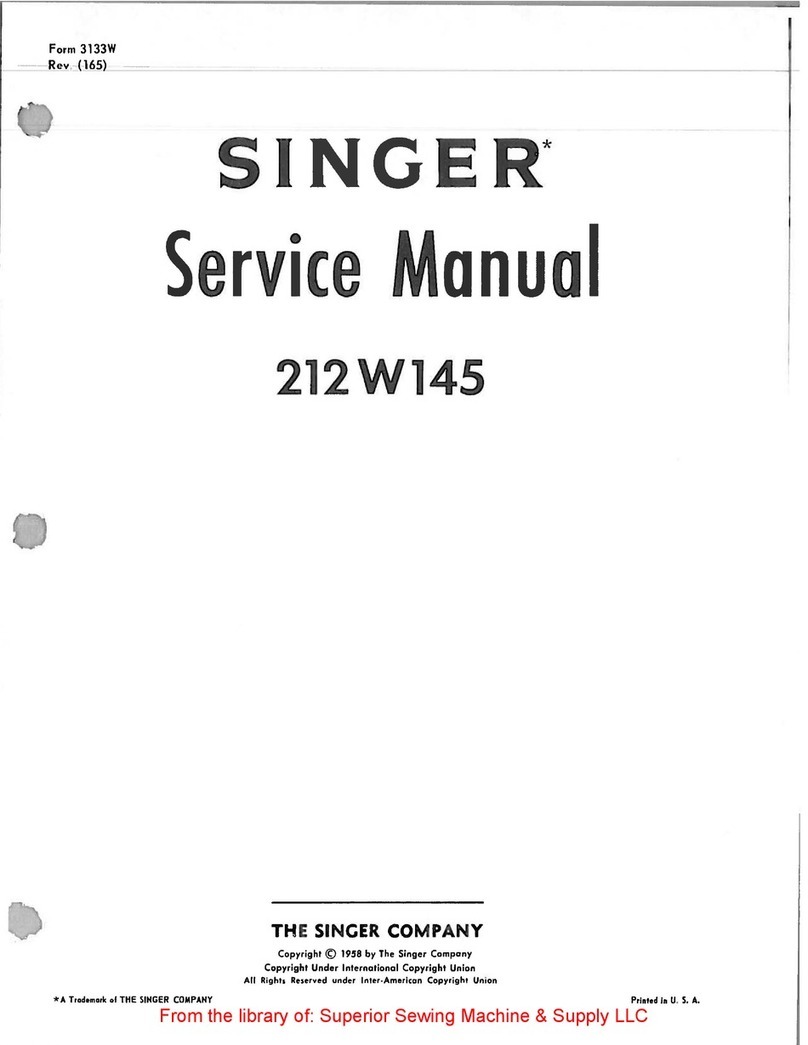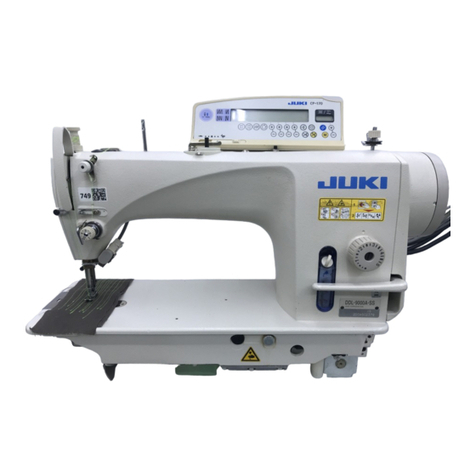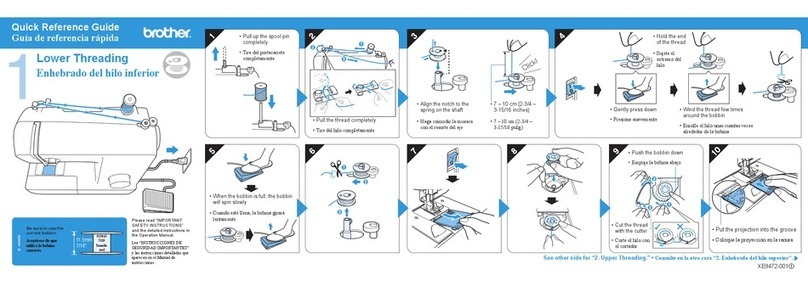VII
Machine Basics
Principal Parts of the Machine .............................................................................................................................................. 1-2
Connecting Machine to Power Source .................................................................................................................................... 3
Two Step Presser Foot Lifter ................................................................................................................................................... 4
Accessories ............................................................................................................................................................................. 5
Treading the Machine
Winding the Bobbin.................................................................................................................................................................. 6
Inserting the Bobbin................................................................................................................................................................. 7
Threading the Upper Thread.................................................................................................................................................... 8
Automatic Needle Threader .................................................................................................................................................... 9
Raising the Bobbin Thread .................................................................................................................................................... 10
Thread Tension .......................................................................................................................................................................11
Sewing
How to Choose Your Pattern ................................................................................................................................................ 12
Stitch Width Dial & Stitch Length Dial ................................................................................................................................... 13
Sewing Straight Stitch............................................................................................................................................................ 14
Reverse Sewing..................................................................................................................................................................... 15
Removing the Work ............................................................................................................................................................... 15
Cutting the Thread ................................................................................................................................................................. 15
Choosing Stretch Stitch Patterns........................................................................................................................................... 16
Blind Hem .............................................................................................................................................................................. 17
Buttonholes............................................................................................................................................................................ 18
Sewing on Buttons................................................................................................................................................................. 19
General Information
Installing the Removable Extension Table .............................................................................................................................. 20
Changing the presser foot ..................................................................................................................................................... 21
Needle/ Fabric/ Thread Chart ................................................................................................................................................ 22
Darning plate ......................................................................................................................................................................... 23
Maintenance and Troubleshooting
Inserting the needle ............................................................................................................................................................... 24
Cleaning the Feed Teeth and Hook Area............................................................................................................................... 25
Troubleshooting Guide........................................................................................................................................................... 26
List of contents

